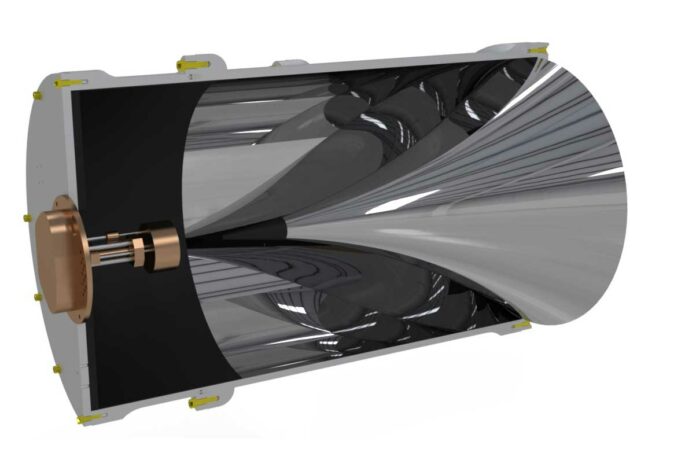Dark matter—one of the great mysteries of modern science—is known to exist because of its effect on other objects in the universe. However, no one has been able to see it until now.
In a new study, scientists at the University of Chicago and Fermi National Accelerator Laboratory reported the first results from a new experiment—the Broadband Reflector Experiment for Axion Detection or BREAD—in the hunt for dark matter. It should be noted that they haven’t discovered dark matter, but they figured out better places to look for it. They also showed a new way to search for it faster and cheaper.
UChicago Assoc. Prof. David Miller, co-leader of the experiment alongside Fermilab’s Andrew Sonnenschein, who initially developed the concept, said, “We’re very excited about what we’ve been able to do so far. This design has many practical advantages, and we’ve already shown the best sensitivity to date in this 11-12 gigahertz frequency.”
Fermilab postdoctoral scholar and study lead author Stefan Knirck, who spearheaded the detector’s construction and operation, said, “This result is a milestone for our concept, demonstrating the power of our approach for the first time. It is great to do this kind of creative tabletop-scale science, where a small team can do everything from building the experiment to data analysis but still greatly impact modern particle physics.”
Scientists have mapped out several most likely options for places and forms to look for dark matter. The common approach involves building detectors to thoroughly search one specific area (in this case, a set of frequencies) to rule it out.
In this study, scientists explored a different approach. Their design is “broadband,” which means it can search a broader range of options with slightly less precision.
Miller said, “If you think about it like a radio, searching for dark matter is like tuning the dial to search for one particular radio station, except there are a million frequencies to check through. Our method is like scanning 100,000 radio stations rather than a few very thoroughly.”
The BREAD detector looks for dark matter in the form of “axions” or “dark photons.” It is made of a metal tube with a curved surface on one end that gathers and sends photons towards a sensor. This system is small enough to fit inside your arms.
In the full-scale version, BREAD will be placed inside a magnet to raise the possibility of turning dark matter particles into photons.
Nevertheless, the experiment was conducted without using magnets as proof of principle. For almost one month, the team operated the prototype gadget at UChicago and examined the collected data.
Scientists noted, “The results are promising, showing very high sensitivity in the chosen frequency.”
Currently, the BREAD has been moved inside a repurposed MRI magnet at Argonne National Laboratory and is taking more data.
Journal Reference:
- Stefan Knirck et al. First Results from a Broadband Search for Dark Photon Dark Matter in the 44 to 52 μeV Range with a Coaxial Dish Antenna. Physical Review Letters. DOI: 10.1103/PhysRevLett.132.131004
